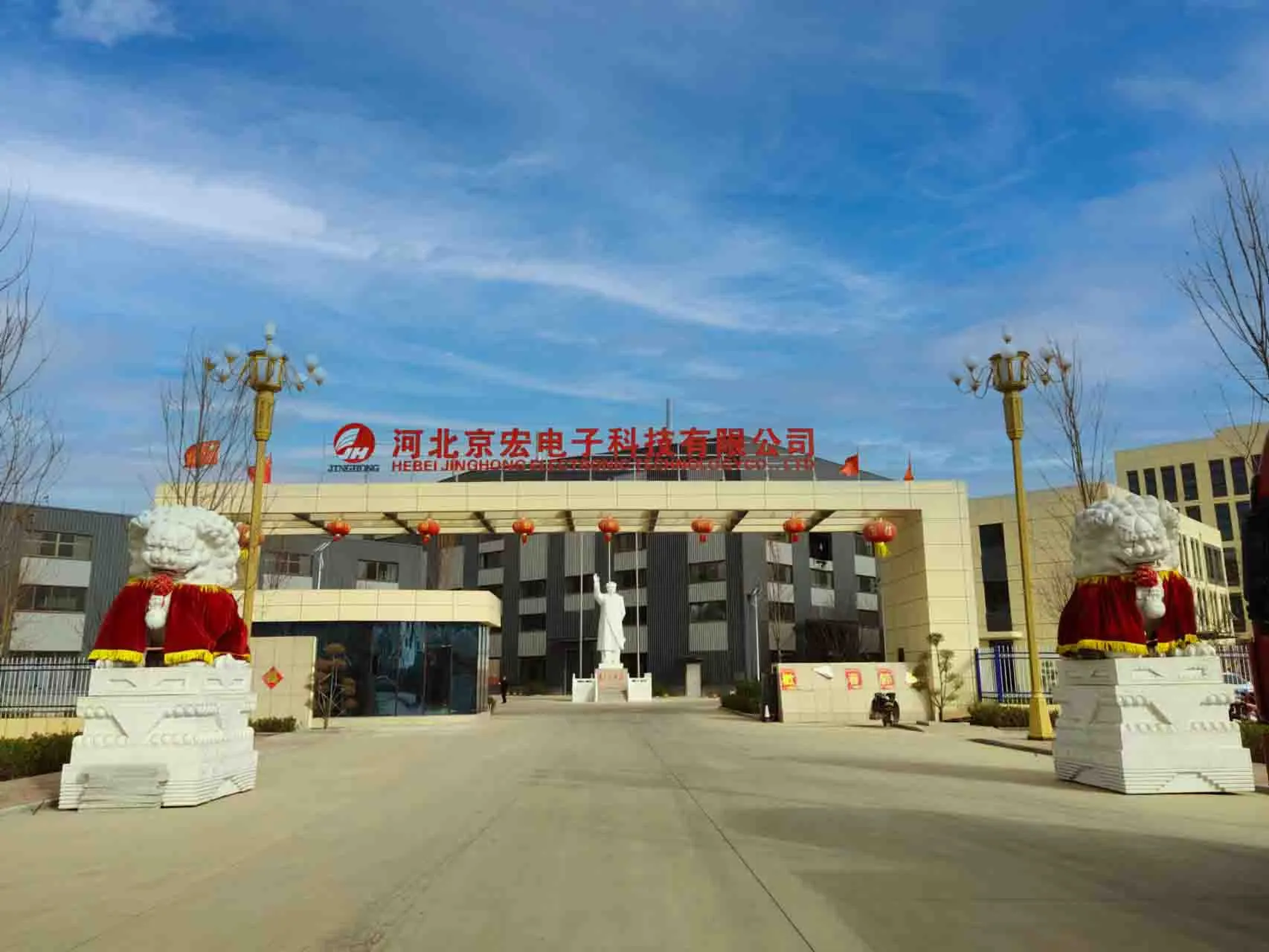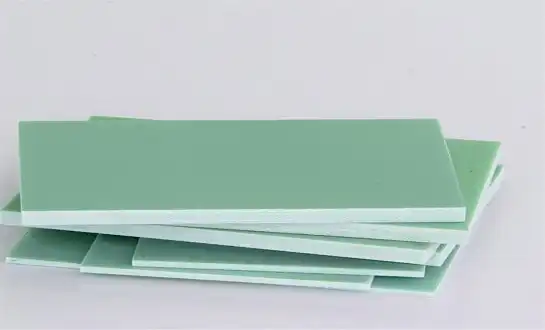The decision between FR4 and 3240 epoxy sheet when choosing materials for circuit board applications frequently decides the outcome of the project. Despite having superior electrical insulating qualities, both materials have different uses in the production of electronics. While FR4 is the most common PCB substrate material, 3240 epoxy sheet performs exceptionally well in mechanical applications and high-temperature settings. Engineering managers can make well-informed judgments for maximum performance and cost-effectiveness in their particular applications by being aware of their distinctive features.

Understanding 3240 Epoxy Sheet Material Properties
The 3240 epoxy sheet is a laminate made of glass cloth that has been strengthened with epoxy resin. For demanding applications, this composite sheet offers remarkable mechanical strength and thermal stability.
Important traits consist of:
Continuous operating temperature range: -40°C to +130°C
Strength at flexion: 340–380 MPa
Strength of dielectric: 16–20 kV/mm
Water absorption: less than 0.5% after a day
Superior CNC machinability with little tool wear
Under mechanical stress, this epoxy laminate keeps its dimensions stable. In comparison to phenolic alternatives, its glass fiber reinforcement offers better impact resistance. The material is appropriate for commercial electrical applications since it satisfies UL recognition requirements.
The material's uniform thickness tolerances are advantageous for manufacturing processes. Complex shapes are possible without the risk of delamination because to precision machining capabilities. Properties that are resistant to chemicals shield against common industrial oils and solvents.
FR4 Circuit Board Material Analysis
For printed circuit board substrates, FR4 is the industry standard. For the best electrical performance, this flame-retardant fiberglass sheet blends woven glass fabric with brominated epoxy resin.
Important requirements consist of:
Temperature at which glass transitions (Tg): 130–140°C
Dielectric constant at 1 MHz: 4.2-4.8
Conductivity of heat: 0.3–0.4 W/mK
Strength of copper peel: >1.4 N/mm
UL94 V-0 flame retardancy rating
In high-frequency circuits, the material's low loss tangent guarantees signal integrity. Reliable PCB manufacturing procedures are made possible by the adhesive qualities of copper. In order to accommodate different design needs, standard thickness options range from 0.1mm to 6.0mm.
The balanced performance characteristics of FR4 are the reason for its widespread adoption. It is appealing for large-scale production because to its affordability. The substance is compatible with multilayer construction methods that are necessary for contemporary electronics.
Performance Comparison: Mechanical Strength Analysis
These materials' mechanical characteristics greatly vary depending on the type of stress. Experiments in the lab show clear benefits for particular uses.
Data from comparative tests reveals:
Tensile strength: FR4 (280 MPa) versus 3240 epoxy sheet (320 MPa)
Impact resistance: FR4 (18 kJ/m²) versus 3240 epoxy sheet (25 kJ/m²)
Comparing the compressive strengths of FR4 (340 MPa) with 3240 epoxy sheet (380 MPa),
3240 epoxy sheet exhibits 15% improved performance in terms of creep resistance.
The stiff epoxy sheet exhibits exceptional load-bearing capacity. Under cyclic loading, its glass epoxy laminate structure withstands fatigue. This benefit is especially important in environments that are prone to vibration.
FR4 provides sufficient strength for common PCB uses. However, industrial epoxy resins' increased durability is necessary for structural components. In portable electronic equipment, FR4 is frequently preferred due to weight reasons.
For structural insulating components that must endure mechanical stress, 3240 epoxy sheet offers exceptional endurance and durability.
Thermal Performance and Heat Resistance Evaluation
The choice of material in thermal management applications is influenced by temperature stability. Thermal cycling and exposure to high temperatures affect both materials in distinct ways.
Metrics for thermal performance include:
Temperature of heat deflection: FR4 (125°C) versus 3240 epoxy sheet (140°C)
Thermal expansion coefficient: FR4 (16 ppm/°C) vs 3240 epoxy sheet (14 ppm/°C)
Constant operating temperature: FR4 (105°C) versus 3240 epoxy sheet (130°C)
Resistance to thermal shock: 3240 epoxy sheet performs 20% better
Long-term heat exposure does not affect the high temperature epoxy's dimensional stability. This feature is crucial for applications involving switchgear and motor components. Tests of thermal cycling show little deterioration of properties over time.
Within typical working ranges, FR4 operates satisfactorily. However, resin deterioration and decreased dielectric strength might result from high temperatures. For greater performance, modern FR4 models use better thermal stabilizers.
The requirements for heat dissipation have a big impact on material choice. Materials with uniform characteristics throughout temperature ranges are advantageous for thermal interface applications.
Superior thermal resistance and stability are provided by 3240 epoxy sheet if you require insulation materials for high-temperature situations above 105°C.
Electrical Properties and Dielectric Performance
Applicability for different circuit board applications is determined by electrical properties. Dielectric characteristics influence the efficiency of insulation and signal transmission across frequency ranges.
Comparing electrical specifications reveals:
Comparing volume resistivity between FR4 (10¹³ Ω·cm) and 3240 epoxy sheet (10¹⁴ Ω·cm)
Dielectric constant: FR4 (4.2-4.8) against 3240 epoxy sheet (4.5-5.0)
Loss tangent at 1 GHz: FR4 (0.020) against 3240 epoxy sheet (0.025)
Arc resistance: FR4 (120 seconds) versus 3240 epoxy sheet (180 seconds)
Both materials' electrical insulating qualities are up to industry standards. Composite sheet materials' improved arc resistance is advantageous for high-voltage applications. The properties of breakdown voltage are constant in a range of humidity levels.
Because FR4 has lower loss tangent values, it performs better at high frequencies. For radio frequency and microwave circuits, FR4 is used due to signal integrity considerations. Standard FR4 requirements improve the predictability of impedance control.
Materials with superior tracking resistance are needed for power electronics applications. Environmental elements like humidity and pollution have varying effects on a material's long-term electrical performance.
For high-frequency applications above 1 GHz, FR4 offers reduced transmission losses and improved signal integrity if PCB substrate materials are required.
Manufacturing and Machining Considerations
Processing features have an impact on component quality and manufacturing efficiency. Achievable tolerances and manufacturing costs are greatly impacted by CNC machinability.
A comparison of manufacturing reveals:
Tool wear rates: Compared to conventional FR4, 3240 epoxy sheet exhibits 30% less tool wear.
Edge quality: With the right tools, both materials produce smooth finishes.
Drilling speeds: 25% faster drilling operations are possible using 3240 epoxy sheet.
Resistance to delamination: 3240 epoxy sheet exhibits excellent edge stability.
The epoxy resin sheet has no problems with fiber pullout and machines cleanly. During manufacturing, accurate thickness control is made possible by consistent material density. Standard machining equipment makes it possible to achieve complex geometries and custom shapes.
For best results, FR4 processing calls for specific tooling. When machining fiberglass sheet materials, carbide cutting tools increase tool longevity. During fabrication, operators are shielded from airborne particles by appropriate dust collection devices.
Production scheduling and quality control procedures are impacted by batch uniformity. Throughout the supply chain, material traceability is guaranteed by supplier certification requirements.
3240 epoxy sheet offers excellent processing efficiency and tool life if you need materials for high-volume production with consistent machining characteristics.
Cost Analysis and Economic Factors
Beyond the initial purchase price, economic factors affect the choice of materials. Processing costs, tool wear, and quality-related considerations are all included in the total cost of ownership.
Analysis of the cost structure shows:
Cost of raw materials: FR4 is usually 15–25% less expensive than 3240 epoxy sheet.
Costs associated with machining: 3240 epoxy sheet cuts processing time by 20–30%.
Tool replacement: 3240 epoxy sheet greatly increases tool longevity
Rejection rates: When handled properly, both materials exhibit similar quality standards.
Long-term relationships with reputable suppliers are favored by volume pricing arrangements. Material shelf life and storage needs are reflected in inventory carrying costs. The density of the materials and the effectiveness of the packaging affect transportation costs.
Value engineering methods weigh cost premiums against performance gains. Higher material costs are frequently justified by longer service lives in applications that demand improved durability. The entire exposure to product liability is impacted by warranty issues.
Procurement decisions are heavily influenced by supply chain stability. While upholding quality requirements, several sourcing techniques lower reliance concerns.
Application Guidelines and Industry Uses
The ideal material selection parameters are determined by the particular application needs. Acceptable material selections are influenced by regulatory compliance and industry requirements.
Among the application suggestions are:
PCB substrates: FR4 is the most used in conventional industrial and consumer electronics applications.
Motor components: 3240 epoxy sheet works well in high-temperature settings and rotating machinery.
Switchgear insulation: When the right thickness is chosen, both materials satisfy electrical safety regulations.
The selection of materials for automotive electronics is influenced by vibration levels and temperature exposure.
Power distribution: Material choice is influenced by arc resistance and tracking characteristics
Different industry and geographical areas have different certification requirements. RoHS compliance and UL recognition are minimal requirements for commercial use. Improved testing and documentation are required by military and aerospace specifications.
Long-term material performance is greatly impacted by environmental factors. UV rays, chemical interaction, and humidity exposure all need for particular material grades or protective treatments.
3240 epoxy sheet offers the electrical performance and thermal stability needed for dependable operation if you need insulating materials for power electronics that operate over 100°C.
J&Q's Premium 3240 Epoxy Sheet Advantages
J&Q uses cutting-edge production techniques and strict quality control requirements to provide outstanding quality. Our experience as a 3240 epoxy sheet producer includes more than 20 years of producing insulation materials.
Among the main benefits are:
Superior Material Consistency: By removing weak spots that reduce mechanical strength, sophisticated resin impregnation procedures guarantee consistent density throughout each sheet.
Enhanced Thermal Stability: Excellent dimensional stability is maintained while a continuous operational temperature range of 130°C is extended by proprietary curing techniques.
Precision Thickness Control: Modern calendering machinery reduces machining allowances by achieving ±0.05mm thickness tolerance across all common sizes.
Superior Surface Quality: A mirror-smooth finish offers the best bonding surfaces for assembly applications while minimizing tool wear during CNC operations.
Extended Shelf Life: Cutting-edge stabilizer methods keep resin from deteriorating while being stored, guaranteeing steady performance even after long storage times.
Custom Sizing Options: Prototyping and specialty applications are supported by in-house cutting capabilities that offer non-standard dimensions without minimum order penalties.
Thorough Testing: In accordance with international standards, each production batch is put through electrical, mechanical, and thermal testing, and certifications are given for traceability.
Fast Delivery Network: With supply chain tracking capabilities, an integrated logistics business allows for quick fulfillment.
Technical Support: For the best project results, seasoned engineers offer application advice and help choosing materials.
Quality Certifications: UL recognition satisfies safety standards for commercial applications, while ISO 9001 manufacturing procedures guarantee consistent quality.
Competitive Pricing: Direct manufacturer partnerships keep premium quality standards while doing away with distributor markups.
Global Reach: In important markets, established international commercial alliances offer local assistance and lower shipping costs.
Conclusion
Operating conditions and particular application needs determine whether to use FR4 or 3240 epoxy sheet. As the typical PCB substrate material, FR4 performs exceptionally well at high frequencies and is reasonably priced for consumer electronics. For demanding industrial applications, the 3240 epoxy sheet offers exceptional mechanical strength and thermal resistance.
When choosing, take operational temperature, mechanical stress levels, and electrical needs into account. The best option is also influenced by volume requirements and budgetary restrictions. When appropriately designed and produced in accordance with quality standards, both materials provide dependable performance.
Collaborate with seasoned vendors who comprehend application needs and offer thorough technical assistance during the course of your project development.
Choose J&Q for Your 3240 Epoxy Sheet Requirements
J&Q is prepared to provide unparalleled knowledge and top-notch service to meet your insulation material demands. From the selection of raw materials until the last delivery, we are dedicated to excellence.
Our twenty years of manufacturing experience allow us to comprehend client problems and offer the best solutions. Over ten years of international commercial collaborations show how dependable we are in international marketplaces. To guarantee that material specifications precisely match application requirements, engineering teams work closely with clients.
From placing the order to confirming the delivery, our integrated logistics company expedites the procurement process. Systems for real-time tracking offer supply chain visibility. Options for custom packaging reduce freight costs while protecting products during transit.
Material certificates, test results, and handling instructions are examples of technical documentation. Support from application engineers aids clients in optimizing designs for increased efficiency and economy. Programs for quality control guarantee consistent performance from batch to batch.
J&Q provides solutions that go above and above, whether you require conventional sizes for prompt delivery or unique specifications for specialty applications. Our skills as a 3240 epoxy sheet supplier include project-specific inventory management and emergency delivery.
In your next project, see the impact that professional knowledge and customer-focused service can create. To discuss your unique demands and obtain comprehensive technical specifications catered to your application requirements, send us an email at info@jhd-material.com.
References
IPC-4101B: Specification for Base Materials for Rigid and Multilayer Printed Boards. Institute for Printed Circuits, 2018.
ASTM D792-13: Standard Test Methods for Density and Specific Gravity of Plastics by Displacement. American Society for Testing and Materials, 2020.
UL 746B: Polymeric Materials - Long Term Property Evaluations. Underwriters Laboratories Inc., 2019.
IEEE 383-2003: IEEE Standard for Qualifying Electric Cables and Splices for Nuclear Facilities. Institute of Electrical and Electronics Engineers, 2003.
IEC 60893-3-1: Insulating Materials - Industrial Rigid Laminated Sheets Based on Thermosetting Resins for Electrical Purposes. International Electrotechnical Commission, 2017.
NEMA LE 1-2016: Industrial Laminated Thermosetting Products. National Electrical Manufacturers Association, 2016.





